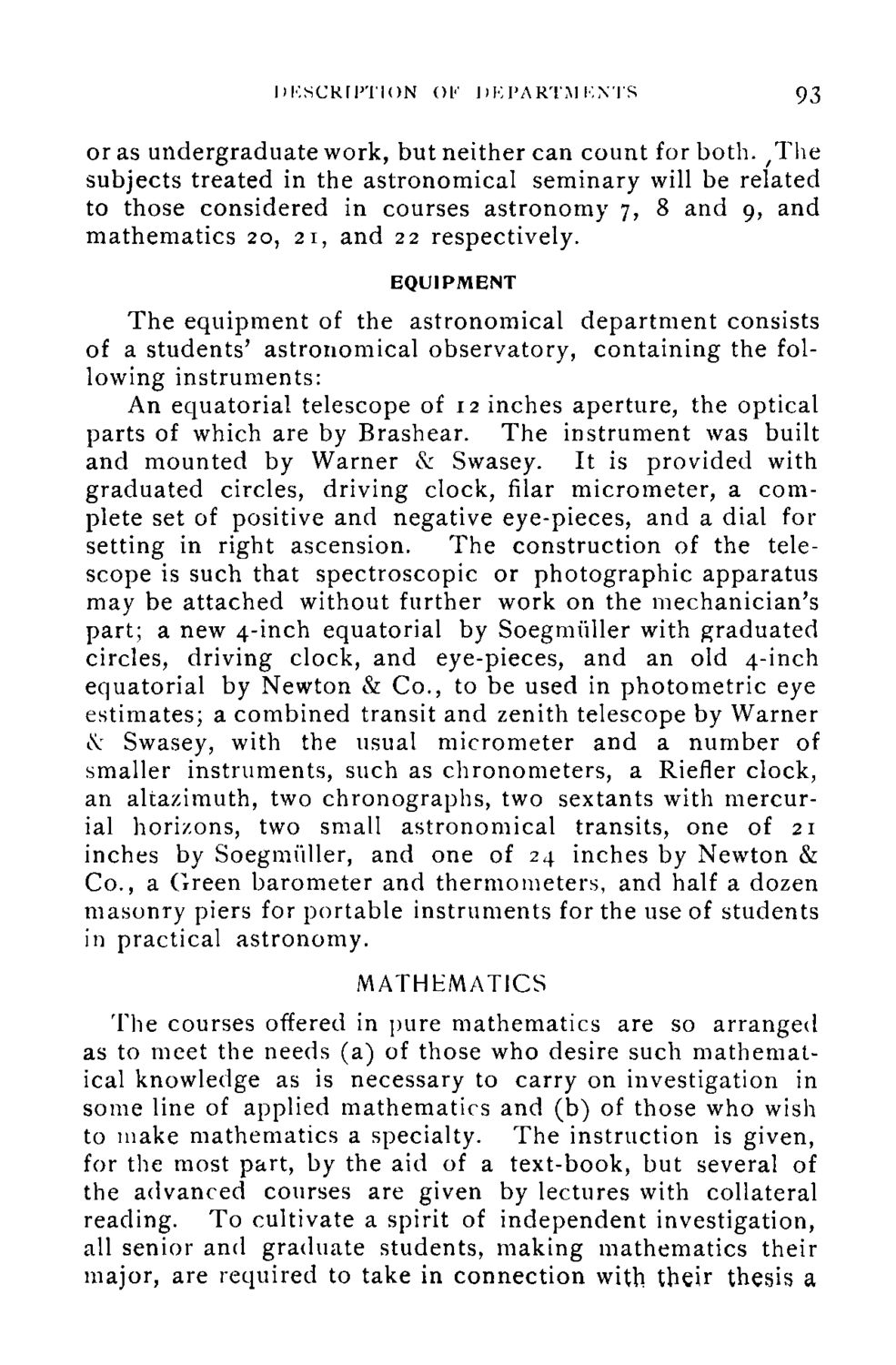| |
| |
Caption: Course Catalog - 1896-1897
This is a reduced-resolution page image for fast online browsing.

EXTRACTED TEXT FROM PAGE:
IlKSCRM'TION Ol'1 I IK I'ARTM KNTS 93 or as undergraduate work, but neither can count for both. /Tlie subjects treated in the astronomical seminary will be related to those considered in courses astronomy 7, 8 and 9, and mathematics 20, 21, and 22 respectively. EQUIPMENT The equipment of the astronomical department consists of a students' astronomical observatory, containing the following instruments: An equatorial telescope of 12 inches aperture, the optical parts of which are by Brashear. The instrument was built and mounted by Warner & Swasey. It is provided with graduated circles, driving clock, filar micrometer, a complete set of positive and negative eye-pieces, and a dial for setting in right ascension. The construction of the telescope is such that spectroscopic or photographic apparatus may be attached without further work on the mechanician's part; a new 4-inch equatorial by Soegmiiller with graduated circles, driving clock, and eye-pieces, and an old 4-inch equatorial by Newton & Co., to be used in photometric eye estimates; a combined transit and zenith telescope by Warner c Swasey, with the usual micrometer and a number of V smaller instruments, such as chronometers, a Riefler clock, an altazimuth, two chronographs, two sextants with mercurial horizons, two small astronomical transits, one of 21 inches by Soegmiiller, and one of 24 inches by Newton & Co., a Green barometer and thermometers, and half a dozen masonry piers for portable instruments for the use of students in practical astronomy. MATHEMATICS The courses offered in pure mathematics are so arranged as to meet the needs (a) of those who desire such mathematical knowledge as is necessary to carry on investigation in some line of applied mathematics and (b) of those who wish to make mathematics a specialty. The instruction is given, for the most part, by the aid of a text-book, but several of the advanced courses are given by lectures with collateral reading. To cultivate a spirit of independent investigation, all senior and graduate students, making mathematics their major, are required to take in connection with their thesis a
| |